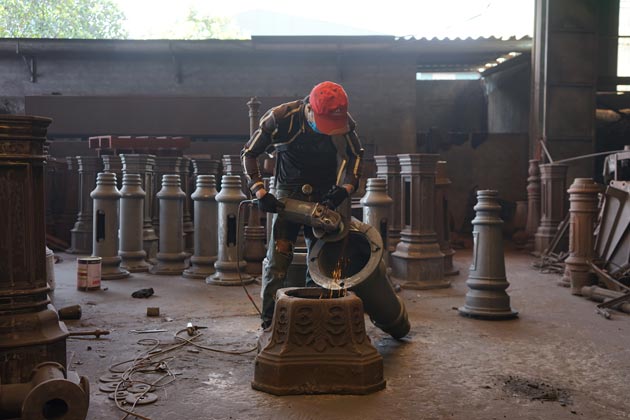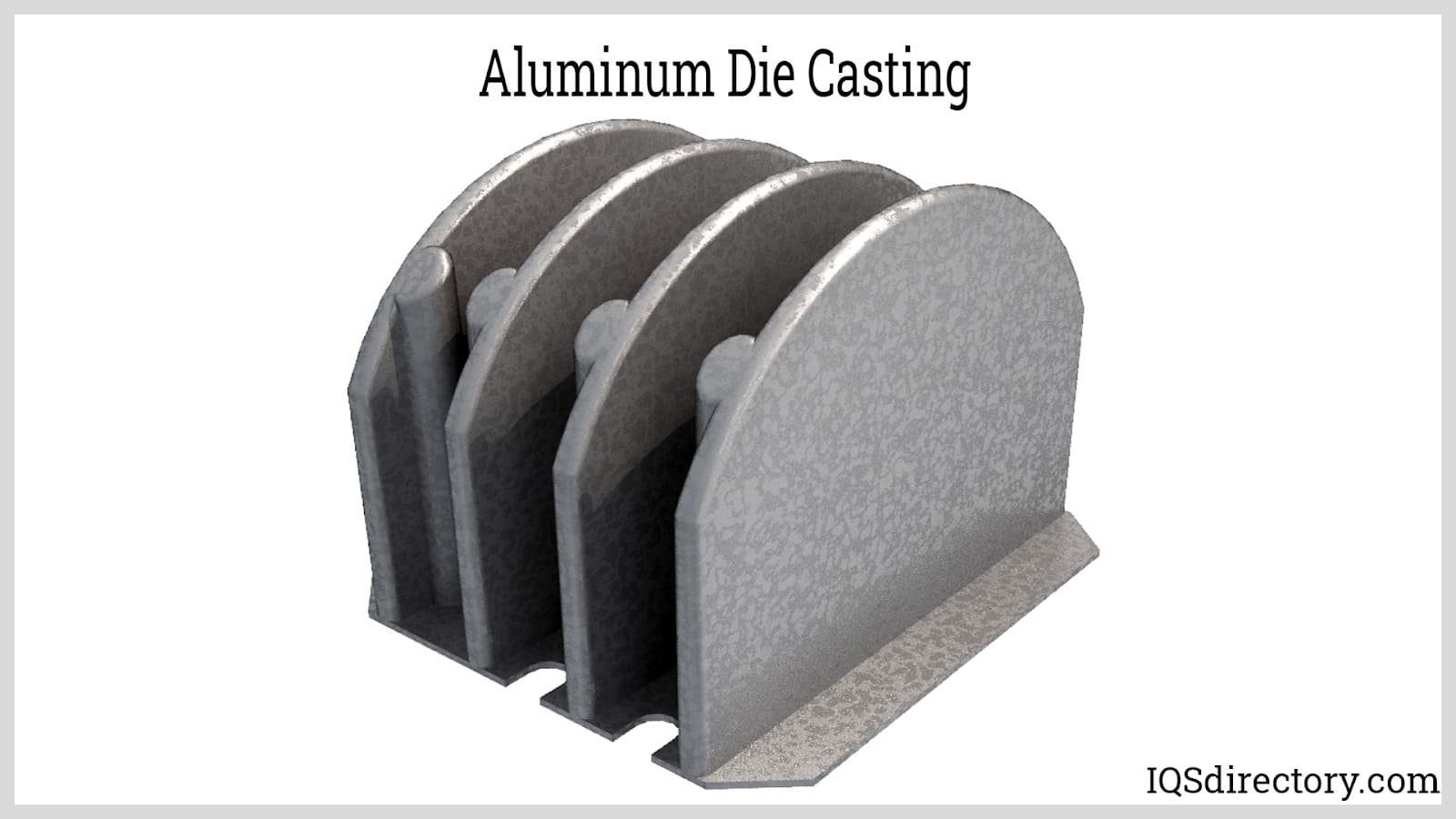Finding out what makes Aluminum Foundry Wisconsin beneficial in casting
Wiki Article
Exactly How Aluminum Foundry Adds to Developments in Aerospace Design
Aluminum shops are integral to improvements in aerospace engineering. They produce light-weight, high-strength components that are essential for contemporary aircraft. With innovative spreading techniques, these foundries create complicated geometries that enhance structural honesty. Additionally, the advancement of exceptional Aluminum alloys sustains the market's concentrate on gas effectiveness and sustainability. However, obstacles stay in the production process. Recognizing these elements reveals the extensive impact of Aluminum on air travel's future.The Relevance of Lightweight Materials in Aerospace Style
As the aerospace sector remains to develop, the value of lightweight products comes to be progressively noticeable. The demand for effectiveness and sustainability drives designers to focus on using products that lower general weight without compromising structural honesty. Lightweight products, specifically Aluminum, play a necessary role in improving gas effectiveness, improving payload ability, and enhancing the overall performance of airplane.Furthermore, the integration of these materials permits ingenious designs, allowing suppliers to develop even more aerodynamic shapes that can endure severe problems. The decrease in weight not only lowers functional prices however likewise adds to a decreased environmental footprint, straightening with worldwide efforts toward sustainability in air travel.
Advanced Casting Techniques in Aluminum Foundries
Advanced casting techniques in Aluminum factories play a vital function in aerospace engineering by allowing the manufacturing of precise and lightweight components. Innovations in mold style and precision casting procedures are important in achieving optimal performance and structural honesty. Furthermore, the development of lightweight alloys boosts the overall performance and performance of aerospace applications.Innovative Mold And Mildew Design
Cutting-edge mold design plays an essential function in the performance and efficiency of Aluminum shops, especially within the aerospace industry. By leveraging innovative products and strategies, contemporary mold and mildews can be crafted to endure high temperatures and stress, ensuring peak efficiency throughout the casting procedure. These designs usually include complex geometries that allow for the manufacturing of lightweight yet structurally audio elements, vital for aerospace applications. Additionally, using computer-aided design (CAD) software application facilitates exact modeling, making it possible for foundries to refine and imitate mold designs prior to physical production begins. This not just improves the quality of cast parts yet additionally decreases waste and lead times, causing significant expense financial savings. Generally, cutting-edge mold style is a cornerstone of development in Aluminum Foundry innovation for aerospace design.Precision Casting Processes
The efficiency of ingenious mold and mildew designs flawlessly integrates with accuracy casting processes, which are necessary for generating premium Aluminum parts in aerospace design. These processes, consisting of sand spreading, pass away spreading, and financial investment casting, ensure the creation of intricate geometries with tight tolerances. Advanced strategies like vacuum spreading and pressure die casting enhance the honesty and surface coating of the end products. Precision casting reduces material waste while making the most of the mechanical residential properties of Aluminum, vital for aerospace applications. Additionally, utilizing real-time surveillance and progressed simulation tools during the casting process enables instant adjustments, bring about boosted quality assurance. Jointly, these accuracy spreading procedures placement Aluminum factories at the forefront of aerospace technology, sustaining the sector's need for integrity and performance.Light-weight Alloy Growth
As aerospace engineers seek to enhance gas performance and performance, lightweight alloy growth ends up being an important focus in Aluminum shops. These foundries use sophisticated casting methods to develop alloys that give remarkable strength-to-weight ratios. Innovations in alloy structure, consisting of the consolidation of components like lithium and magnesium, allow the manufacturing of products that withstand extreme problems while decreasing general aircraft weight. Strategies such as die spreading and investment spreading promote the precision production of complicated shapes, which are important for aerospace applications. In addition, continuous research intends to enhance these alloys for improved mechanical residential or commercial properties and boosted sturdiness. By prioritizing lightweight alloy development, Aluminum foundries greatly add to the evolution of aerospace engineering, leading the way for a lot more lasting and reliable airplane layouts.
Enhancing Structural Honesty Via Aluminum Components
Aluminum elements offer substantial benefits in improving structural integrity within aerospace engineering. Their lightweight nature adds to general effectiveness while maintaining stamina, which is vital for airplane efficiency. Furthermore, the stress and anxiety resistance residential properties of Aluminum aid assure the sturdiness and dependability of aerospace frameworks under different functional conditions.
Light-weight Material Advantages
While traditional materials commonly compromise weight for stamina, making use of Aluminum parts in aerospace engineering provides significant benefits in architectural integrity. Aluminum's lightweight nature adds to general style performance, permitting more structured aircraft that take in much less gas, therefore boosting sustainability. The product's outstanding strength-to-weight proportion warranties that elements keep longevity without including unneeded mass. This quality promotes improved efficiency and agility in flight, in addition to optimized haul abilities. In addition, Aluminum's resistance to corrosion prolongs the life-span of aerospace structures, reducing maintenance expenses and boosting security. As manufacturers increasingly take on Aluminum alloys, the aerospace market experiences a transformative change towards a lot more effective and effective design options that focus on both efficiency and ecological responsibility.Anxiety Resistance Features
Although various products have distinct buildings, Aluminum's exceptional stress and anxiety resistance sticks out as a vital consider improving the architectural integrity of aerospace parts. This resistance plays a critical role in guaranteeing that aircraft can endure various functional tensions, consisting of exhaustion, impact, and ecological problems. Aluminum alloys, specifically crafted for aerospace applications, exhibit high tensile stamina while preserving light-weight features, allowing designers to develop more efficient structures - Aluminum Foundry. Furthermore, the capability of Aluminum to withstand cyclic loading without substantial deformation adds to the durability and dependability of aerospace elements. As developments proceed in Aluminum Foundry strategies, the development of stress-resistant Aluminum components assures additional renovations in performance, security, and effectiveness across the aerospace industry, solidifying Aluminum's function as a favored material in modern designGas Efficiency Improvements Driven by Aluminum Innovations
As the aerospace industry seeks to enhance gas performance, ingenious uses of Aluminum have emerged as a crucial service. Aluminum's lightweight nature significantly reduces aircraft weight, permitting for lower gas consumption during flight. This reduction in weight is important, as even tiny decreases can cause significant enhancements in overall fuel economic situation.Advanced Aluminum alloys, developed for enhanced toughness and durability, allow makers to develop parts that maintain architectural integrity while lessening mass - Aluminum Foundry. Furthermore, the integration of Aluminum in airframes and engine parts helps with enhanced aerodynamics, adding to minimized drag and raised efficiency
The adoption of Aluminum in aerospace not just meets the need for fuel-efficient design yet likewise lines up with regulative stress for lower emissions. As these innovations remain to advance, they play a significant role in establishing brand-new standards for fuel effectiveness, making sure that the aerospace sector can satisfy expanding ecological and economic obstacles.

The Role of Aluminum in Sustainable Aviation Practices
The increasing focus on lasting air travel techniques has placed Aluminum view it as a necessary material in the mission for greener aircraft style. Recognized for its light-weight residential properties, Aluminum substantially lowers airplane weight, resulting in reduced gas usage and discharges. Its recyclability additionally boosts its sustainability profile, as Aluminum can be reused indefinitely without loss of quality. This characteristic supports a round economic climate within the aeronautics industry, minimizing waste and source depletion.Improvements in Aluminum alloys have improved their toughness and deterioration resistance, allowing for longer service life and decreased upkeep requirements. These developments help with the advancement of extra effective airplane frameworks, adding to Related Site total sustainability initiatives. In addition, Aluminum's thermal conductivity plays a crucial function in energy-efficient layouts, boosting systems such as warmth exchangers. Collectively, these attributes emphasize Aluminum's pivotal function beforehand sustainable aviation, straightening with international campaigns targeted at reducing the environmental impact of flight.
Obstacles Faced by Aluminum Foundries in Aerospace Manufacturing
While Aluminum shops play an essential duty in aerospace manufacturing, they encounter significant difficulties that can impact manufacturing performance and top quality. One major challenge is the rigid high quality control criteria called for in the aerospace market. Any problem can jeopardize safety and security and performance, necessitating extensive inspection processes that prolong manufacturing timelines. In addition, factories often emulate changing basic material prices, which can influence pricing and earnings. The intricacy of Aluminum alloys made use of in aerospace applications more makes complex the production process, as specific formulas are vital for accomplishing wanted mechanical residential properties. In addition, experienced labor shortages hinder the capability to maintain high-quality production degrees. Finally, environmental policies impose constraints on emissions and waste administration, requiring foundries to invest in lasting practices, which can be cost-prohibitive. These variables collectively produce a landscape where Aluminum shops need to continually adjust to fulfill the progressing demands of aerospace production while ensuring safety and conformity.Future Trends in Aluminum Applications for Aerospace Design
With developments in technology and increasing needs for performance, the future of Aluminum applications in aerospace engineering is poised for substantial change. The integration of innovative Aluminum alloys and compounds is expected to boost strength-to-weight ratios, leading to more fuel-efficient airplane layouts. Furthermore, innovations in additive manufacturing strategies will certainly permit the manufacturing of complex Aluminum structures that were formerly difficult, maximizing efficiency and lowering waste.
Lasting techniques will certainly play an essential duty, with a growing focus on recycling Aluminum to minimize ecological effect. The aerospace field is most likely to welcome smarter manufacturing procedures, such as automation and expert system, making sure better and accuracy in Aluminum components. Cooperations between Aluminum shops and browse around these guys aerospace companies will certainly promote research study and advancement, leading the method for new applications that fulfill the rigid requirements of modern aerospace engineering. Overall, the future looks assuring for Aluminum's duty fit the skies
Regularly Asked Concerns
What Are the Ecological Effects of Aluminum Manufacturing in Aerospace?
The environmental effects of Aluminum production in aerospace include substantial power consumption, greenhouse gas emissions, and environment disturbance. Additionally, mining procedures can bring about soil degradation and water contamination, elevating problems regarding sustainability and ecological equilibrium.Exactly How Does Aluminum Compare to Other Products in Aerospace Applications?
Aluminum offers an one-of-a-kind combination of lightweight buildings, corrosion resistance, and cost-effectiveness compared to other materials. Its high strength-to-weight ratio makes it particularly useful for aerospace applications, boosting gas performance and general performance in aircraft design.What Qualifications Do Aluminum Foundry Workers Need for Aerospace Projects?
Aluminum Foundry employees call for specific training in metallurgy and spreading strategies, in addition to knowledge of aerospace industry criteria. Qualifications in quality assurance and safety and security methods are additionally necessary to assure compliance with rigorous aerospace job needs.Exist Any Type Of Security Interest In Using Aluminum in Aerospace Design?
Safety and security concerns pertaining to Aluminum in aerospace design include sensitivity to rust, fatigue, and stress and anxiety cracks. Appropriate therapy and alloy option are vital to minimize these dangers, making certain structural honesty and general security in aerospace applications.Just How Does Aluminum Recycling Advantage the Aerospace Industry?
Aluminum reusing substantially benefits the aerospace market by reducing material prices, decreasing environmental effect, and saving power. This lasting method improves the sector's efficiency while promoting making use of light-weight, high-performance elements in aircraft production.Advanced spreading strategies in Aluminum factories play an essential role in aerospace design by enabling the production of light-weight and exact components. Cutting-edge mold layout plays a crucial duty in the efficiency and effectiveness of Aluminum foundries, especially within the aerospace sector. As aerospace engineers look for to boost fuel efficiency and efficiency, lightweight alloy development comes to be a crucial focus in Aluminum shops. Aluminum alloys, particularly crafted for aerospace applications, display high tensile stamina while maintaining light-weight characteristics, allowing designers to make more reliable structures. Partnerships between Aluminum foundries and aerospace business will certainly cultivate study and advancement, leading the means for brand-new applications that meet the stringent demands of contemporary aerospace design.
Report this wiki page